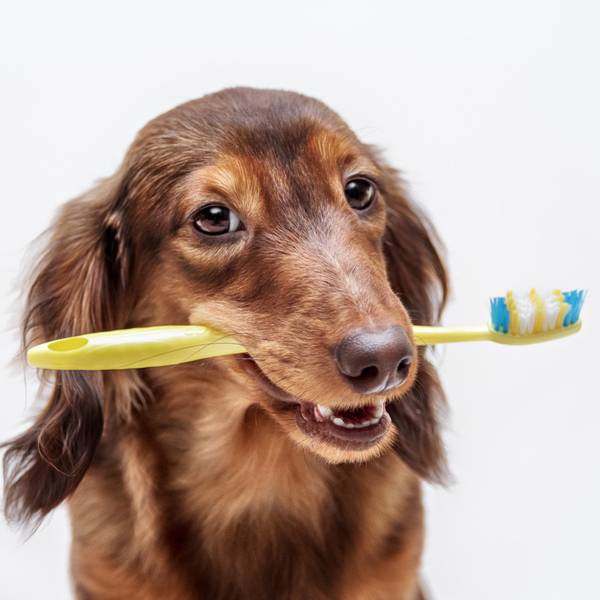Did you know that if properly maintained your pet’s dental hygiene can help extend your pets life for up to four years?!
That’s a lot of extra furry snuggles! There is a misconception that dental issues are a problem for our older pets only, but this isn’t the case; depending on their diet, dental issues can also begin in younger dogs and cats.
Signs of dental disease in your pet
- Breath issues
- Red, swollen gums
- Broken teeth
- Buildup on teeth
- Change in appetite
- Showing interest in food but reluctance to eat harder foods
So, just how do we look after our four-legged friend’s pearly whites? We can’t ask them to go grab the brush themselves, so these are our tips to tackle the issue head-on…or should we say, teeth on?
Preventing Dental Disease
Brush Their Teeth
It sounds simple, doesn’t it? But somehow this process is actually quite difficult for many pet owners due to the resistance from their dog or cat. To help your pet feel more comfortable with the teeth brushing process here are some steps to follow:
STEP 1: Don’t rush into it. Introduce teeth brushing slowly to your pet. Don’t hold them down and keep it short and sweet so it becomes a positive experience, not a stressful one.
STEP 2: Get your pet used to the idea of someone near their mouth. Start by letting your pet get comfortable to you opening their mouth and being near their teeth. You can use treats to aid in an easy transition with this.
STEP 3: Firstly try introducing your pet to the idea of gauze (or a piece of an old towel) to clean their teeth by wrapping it around your finger and using a gentle scrubbing motion.
STEP 4: If all of the above steps have been introduced to your pet and they are seeming comfortable with the idea now you can try to introduce teeth brushing for your animal. There are many kinds of toothpaste and soft toothbrushes specifically designed for pets so talk to your Pet Expert at your nearest Just For Pets store.
Alternatives to brushing their teeth
Raw bones are not only entertaining for our pets (and muchly appreciated by them!) but did you know that a raw un-cut bone once or twice a week will help minimise the risk of dental issues in your pet?
There are also scientifically formulated dental pet foods which are proven to reduce bacteria and other nasties in your pets’ mouth. Incorporating a dental dry food option for your dog or cat allows them to stimulate their gums and remove bacterial plaque whilst eating.
Pet Dental treats are also readily available at your pet store. These work with both the mechanical action of chewing in the same manner dental foods and bones do, but they also contain other ingredients that assist with bad breath and comprise of a “matrix” like structure that cleans the entire tooth as the pet chews. There is a wide range of qualities in the dental treat space, so be sure to talk to your pet expert as to which dental treatment would be recommended for your pet.
Water additives and dental gels are also available to make life easy for both your pet and you as the pet parent when it comes to your fur babies dental hygiene. Both additives and gels remove plaque and tartar, and they also remove harmful bacteria in the pet’s mouth. Results can be seen in as little as 30 days and have been a welcome addition to the dental hygiene regime for many pets.
Trip to the Vet
Regular appointments with your pets Vet or pet expert for regular dental health check-ups help to also prevent decay and prevention of more serious problems. Your Vet can give your pet’s teeth a professional clean and examination.
As always, if you have any concerns about your pet’s dental hygiene or are looking at ways of preventing future issues please drop by your local Just For Pets store.















.jpg?v=1731561571411&options=w_600)